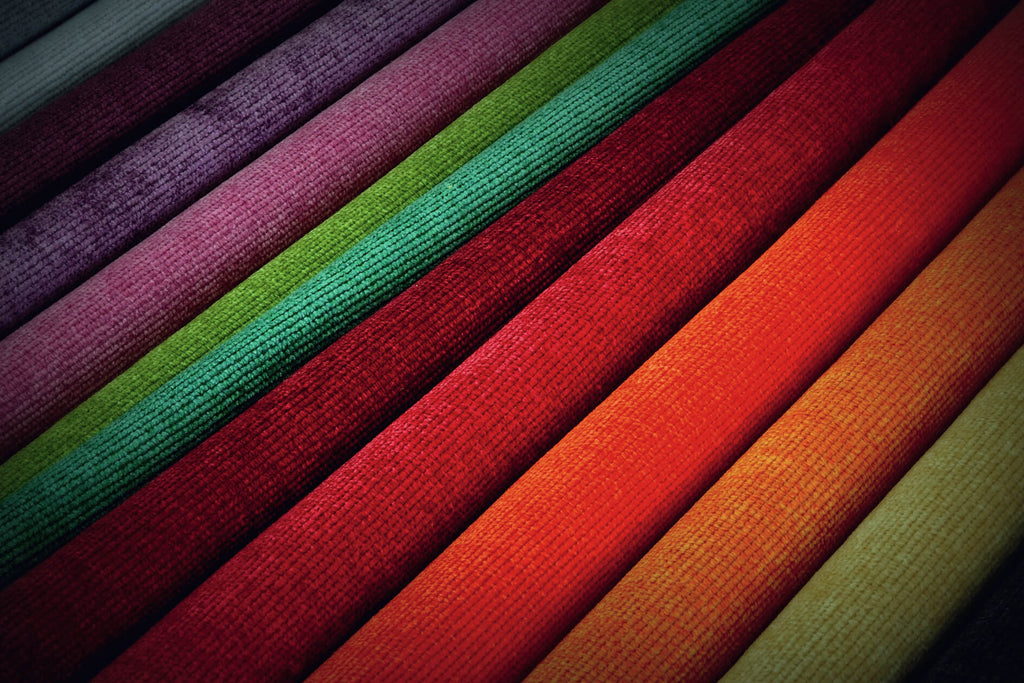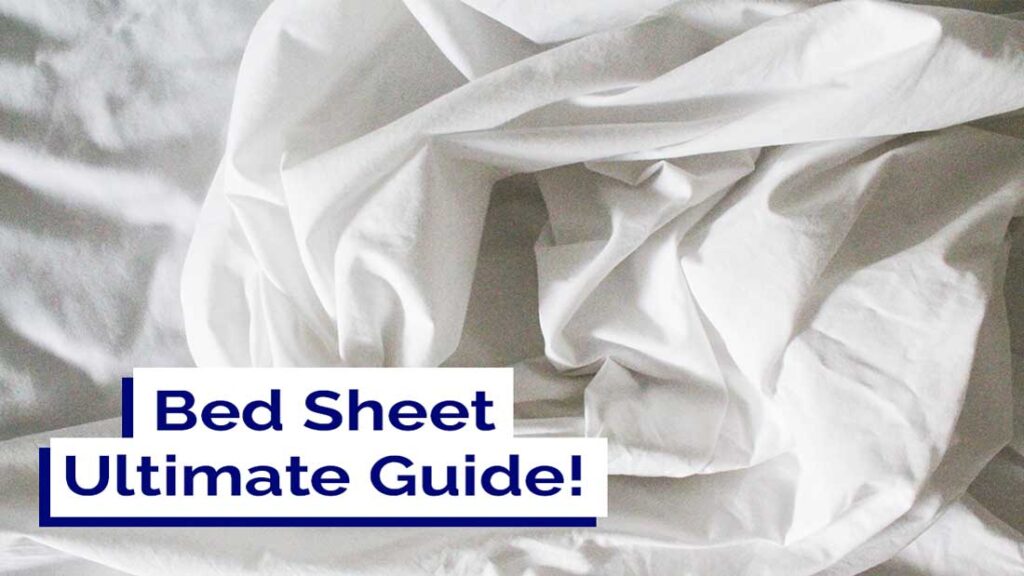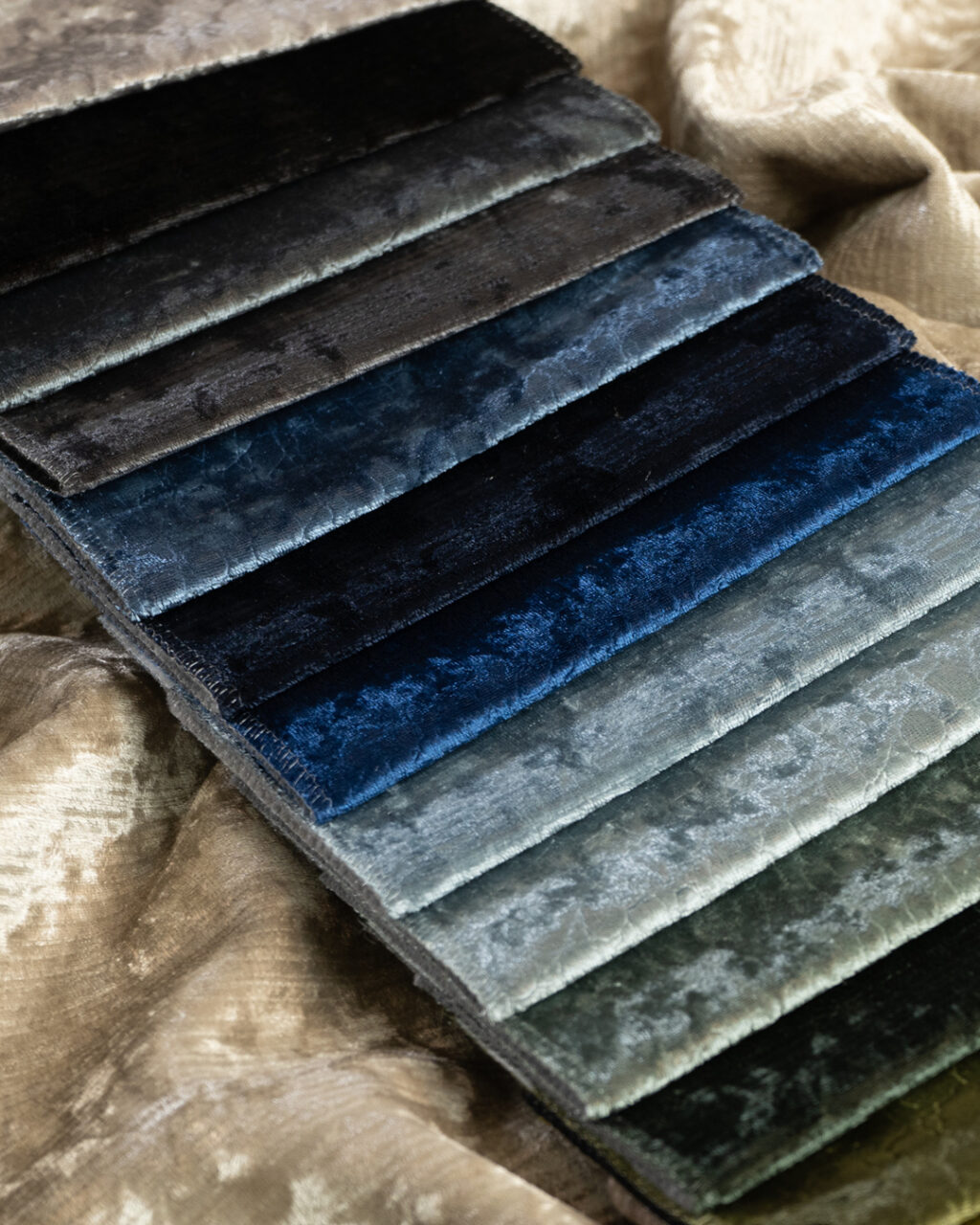A napped fabric is a type of textile that has been treated to create a soft, fuzzy texture on the surface. Napping involves brushing or raising the fibers of the fabric to create a nap, which can be either short or long.
Napped fabrics are commonly used for clothing, upholstery, and bedding due to their luxurious feel and enhanced insulation properties. The brushing process helps to trap air within the fibers, making the fabric warmer and more comfortable to wear or use.
Additionally, napped fabrics have a visually appealing appearance with a plush, velvety look. They can be made from natural or synthetic fibers, and examples include flannel, velvet, and fleece. Overall, napped fabrics offer both aesthetic and functional advantages, making them a popular choice in various applications.
Table of Contents
- The Definition Of Napped Fabric
- Understanding The Napping Process
- Popular Applications Of Napped Fabrics
- Different Types Of Napped Fabrics
- Advantages Of Choosing Napped Fabrics
- Caring For Napped Fabrics
- Exploring The Luxurious Appeal Of Napped Fabrics
- Incorporating Napped Fabrics Into Your Lifestyle
- Frequently Asked Questions For What Is A Napped Fabric
- Conclusion
The Definition Of Napped Fabric
A napped fabric refers to a woven material with raised fibers on its surface. This creates a soft and fuzzy texture, providing warmth and comfort. Popular examples include flannel, fleece, and velvet, making napped fabrics ideal for cozy apparel and home furnishings.
What exactly is napped fabric? To put it simply, napped fabric refers to a type of textile that has a raised surface with a soft and fuzzy texture. This unique characteristic is achieved through a process called napping, where the fibers of the fabric are brushed and raised, creating a pile that can vary in length and density. Napping can be done to various types of fabrics, such as cotton, wool, and synthetics, giving them a luxurious, cozy feel.
The Characteristics Of Napped Fabric
When it comes to napped fabric, there are a few key characteristics that set it apart from other textiles:
- Softness: Napped fabric is known for its remarkable softness. The raised fibers give the fabric a plush, velvety feel that is a delight to touch.
- Insulation: Due to the raised surface and the air pockets created by the nap, napped fabrics offer excellent insulation properties. This makes them ideal for keeping warm and cozy in colder climates.
- Enhanced Appearance: The napping process gives fabrics a unique visual appeal. The raised fibers catch the light in various ways, creating a subtle sheen or luster that adds depth and richness to the fabric’s appearance.
- Improved Durability: The napped surface helps protect the fabric from wear and tear, as the raised fibers act as a barrier against friction and abrasion. This makes napped fabrics more resistant to pilling, maintaining their pristine appearance for longer.
Examples Of Napped Fabrics
There are several different types of fabrics that can undergo the napping process, resulting in various napped fabrics:
- Fleece: Fleece is a popular napped fabric made from synthetic fibers. Its soft texture and excellent insulation properties make it commonly used in jackets, blankets, and winter accessories.
- Flannel: Flannel is another common napped fabric, typically made from wool or cotton. It is known for its warmth and cozy feel, making it a popular choice for clothing items like shirts, pajamas, and bedding.
- Velour: Velour is a luxurious napped fabric with a soft, plush feel. It is often used in upholstery, drapery, and clothing items that require a touch of elegance and comfort.
- Suede: Suede is a type of leather that has undergone the napping process on one side, giving it a velvety texture. It is commonly used in shoes, bags, and furniture upholstery.
These are just a few examples of napped fabrics, each with its own unique properties and uses. Whether you’re looking for warmth, softness, or an enhanced aesthetic, napped fabrics offer a range of options to suit your needs.

Credit: homeleon.com
Understanding The Napping Process
A napped fabric is characterized by its raised, fuzzy surface, created through a process where the fibers are brushed or teased to produce a soft texture. Understanding this fabric’s napping process helps in appreciating its unique feel and appearance, making it a popular choice for cozy and luxurious garments and furnishings.
### Understanding the Napping Process Napping enhances the texture and appearance of fabrics by creating a soft, fuzzy surface. The process involves brushing fibers to raise them from the base fabric. #### Types of Napping Techniques 1. Fulfilling Napping: Adds a velvety texture by brushing fibers in one direction. 2. Brushing Napping: Enhances warmth and insulation by brushing fibers in all directions. #### Effects of Napping on Fabric Properties – Improved Softness: Napping adds a cozy feel to the fabric. – Enhanced Insulation: Napping increases the warmth of the textile. – Textural Variations: Napping can create unique textures and patterns.Popular Applications Of Napped Fabrics
Napped Fabrics In Fashion Industry
Napped fabrics are commonly used for jackets, coats, and skirts due to their soft texture.
Napped Fabrics In Home Furnishings
Napped fabrics also find their way into home decor, being ideal for pillows, blankets, and upholstery.

Credit: sleepopolis.com
Different Types Of Napped Fabrics
In the world of textiles, napped fabrics are cherished for their softness and warmth. The process of napping involves brushing the fabric fibers to create a raised surface that results in a fuzzy or soft texture. Several types of napped fabrics are popular in fashion and interior design, each with its unique characteristics and uses. Let’s explore three popular variants: velvet, flannel, and fleece.
Vеlvеt
Vеlvеt is a luxurious аnd еlеgаnt napped fabric that has been cherished for centuries. It is known for its smooth and soft texture, created by the intricate weaving technique. The loops formed during the weaving process are cut to create a dense, short pile that gives velvet its characteristic sheen and plushness.
Key Features of Velvet:
- Soft and silky texture
- Elegant and lustrous appearance
- Dense, short pile
- Shimmering under different lighting conditions
Made from various fibers like silk, cotton, and synthetics, velvet is often used in high-end fashion garments, upholstery, and home decor items, adding a touch of luxury to any space.
Flannel
Flannel is a warm and cozy napped fabric that is highly popular in winter clothing and bedding. It is typically made from cotton or wool fibers, and its napping process makes it wonderfully soft and insulating. Flannel’s napping technique involves raising the surface fibers and then brushing them to create a soft and fuzzy texture.
Key Features of Flannel:
- Soft and fuzzy texture
- Warm and insulating properties
- Typically made from cotton or wool fibers
- Comes in a variety of colors and patterns
Flannel can be found in various apparel and home textile items, such as shirts, pajamas, blankets, and sheets. Its cozy feel makes it a popular choice for cold weather comfort.
Fleece
Fleece is a versatile and lightweight napped fabric that is loved for its warmth and quick-drying properties. It is typically made from polyester fibers, which are napped to create a soft and fuzzy texture. Fleece can provide excellent insulation while being breathable, making it ideal for outdoor activities and winter sports.
Key Features of Fleece:
- Soft and lightweight texture
- Wicks away moisture and dries quickly
- Excellent insulation properties
- Often used for sweaters, jackets, and blankets
Due to its cozy and practical nature, fleece has become a popular choice for activewear, outerwear, and cozy home accessories. Its ability to provide warmth without adding bulk makes it a go-to fabric for those who love comfort and functionality.
Advantages Of Choosing Napped Fabrics
Napped fabrics offer numerous advantages, including enhanced softness, warmth, and insulation properties. These fabrics feature a raised surface that provides a cozy texture, making them ideal for blankets, clothing, and upholstery. Choose napped fabrics for a comfortable and cozy experience.
Softness And Comfort
A major advantage of choosing napped fabrics is the incredible softness and unmatched comfort they provide. These fabrics undergo a special manufacturing process that involves brushing or raising the surface fibers, creating a soft and luxurious texture. This unique characteristic distinguishes napped fabrics from other types of fabrics, offering a delightful tactile experience.
Insulation And Warmth
Another excellent advantage of napped fabrics is their exceptional insulation properties, which provide warmth during those chilly winter months. The raised fibers in napped fabrics create air pockets that trap heat, acting as a natural barrier against the cold. This insulation not only keeps you cozy but also helps to conserve energy by reducing the need for additional heating in your home.
Caring For Napped Fabrics
Napped fabrics, such as fleece, velvet, and suede, are luxurious and soft, but they require special care to maintain their quality and appearance. To keep your napped fabrics looking their best, it’s essential to follow proper care guidelines, including washing and drying tips and preventing pilling and matting.
Washing And Drying Tips
Washing napped fabrics requires gentle handling to prevent damage or pilling. Always check the care label for specific instructions, but generally, it’s best to wash these fabrics in cold water on a gentle cycle. Use a mild detergent, and avoid fabric softeners or bleach as they can harm the fabric’s nap. When drying, air-drying is the safest option to prevent shrinking or matting. If using a dryer, use a low heat setting and remove the fabric promptly to reduce wrinkling.
Preventing Pilling And Matting
To prevent pilling on napped fabrics, turn them inside out before washing and avoid washing them with rough or abrasive fabrics. Regularly brushing the fabric with a soft-bristled brush can help lift the nap and prevent matting. Avoid friction and rubbing against rough surfaces to maintain the fabric’s softness and prevent pilling.
Exploring The Luxurious Appeal Of Napped Fabrics
How Napped Fabrics Add Elegance And Sophistication
Napped fabrics bring a touch of luxury to any space.
- Velvety textures enhance visual appeal.
- Soft feel adds a sense of sophistication.
- Creates a rich ambiance in the room.
Creating A Cozy Atmosphere With Napped Fabrics
Napped fabrics transform spaces into cozy retreats.
- Warmth and comfort envelop the surroundings.
- Inviting textures encourage relaxation.
- Adds depth and dimension to the decor.

Credit: fibreguard.com
Incorporating Napped Fabrics Into Your Lifestyle
When it comes to adding warmth, texture, and coziness to your everyday life, napped fabrics are a fantastic choice. Whether you’re dressing up or sprucing up your home, these soft and luxurious materials can elevate your style in an instant. Read on for some fashion styling tips and home decor ideas that will help you incorporate napped fabrics seamlessly into your lifestyle.
Fashion Styling Tips
When it comes to fashion, napped fabrics can take your outfit from basic to chic. Here are some tips to help you style these fabrics with flair:
- Layer it up: Use napped fabrics as a base layer to add depth and interest to your outfit. Pair a cozy, flannel shirt with jeans and a leather jacket for a casual yet fashionable look.
- Accessorize with softness: Add accessories made from napped fabrics to your ensemble. A velvet scarf, a cashmere hat, or gloves with a plush lining can instantly elevate your style.
- Mix textures: Combine different textures by pairing napped fabrics with smooth materials. For example, team a fuzzy sweater with a sleek satin skirt for a trendy contrast.
- Play with patterns: Opt for napped fabrics in bold prints and patterns to make a fashion-forward statement. A plaid wool coat or a houndstooth scarf can add a pop of personality to any outfit.
Home Decor Ideas
Napped fabrics are not only ideal for fashion, but they can also transform your living space into a cozy sanctuary. Here are some home decor ideas that will help you infuse warmth and comfort into your surroundings:
- Add throw blankets: Drape napped fabric throw blankets over your sofa or armchair to create an inviting atmosphere. Opt for colors and prints that complement your existing decor for a stylish touch.
- Liven up your bedding: Swap out your usual bedding with luxurious napped fabric duvets and pillowcases. Not only will they keep you warm, but they will also add a touch of elegance to your bedroom.
- Create texture with curtains: Hang curtains made from napped fabrics to add texture and softness to your windows. Opt for thick, heavy materials to block out light and create a cozy ambiance.
- Upgrade your cushions: Replace your old cushions with ones crafted from napped fabrics. Whether it’s a velvet, corduroy, or chenille cover, these cushions will instantly make your living room more inviting.
Frequently Asked Questions For What Is A Napped Fabric
What Is An Example Of A Napped Fabric?
Velvet is a common example of a napped fabric, featuring a soft texture achieved through brushing the fibers.
What Is The Meaning Of Napped Cloth?
Napped cloth has raised fibers that create a soft, fuzzy texture for warmth and comfort.
What Does Nap Mean In Fabric?
Nap in fabric refers to the texture or direction of the fibers on its surface. It can be smooth or raised, like in velvet. Fabrics with nap require careful handling when cutting and sewing to ensure the fibers lie in the same direction for a consistent appearance.
What Are The Disadvantages Of Napped Fabric?
Disadvantages of napped fabric include pilling, potential shrinkage, and limited design options. It may also require special care during cleaning.
Conclusion
To wrap it up, understanding the basics of napped fabric is essential for anyone interested in textiles. Whether snuggling up in a cozy fleece blanket or appreciating the velvety feel of a suede jacket, the unique surface created through napping adds luxurious comfort and visual appeal.
By knowing how napping enhances fabric, consumers can make informed choices while shopping, ensuring they find the perfect material for their needs. Dive into the world of napped fabrics and unlock a new level of comfort and style.
